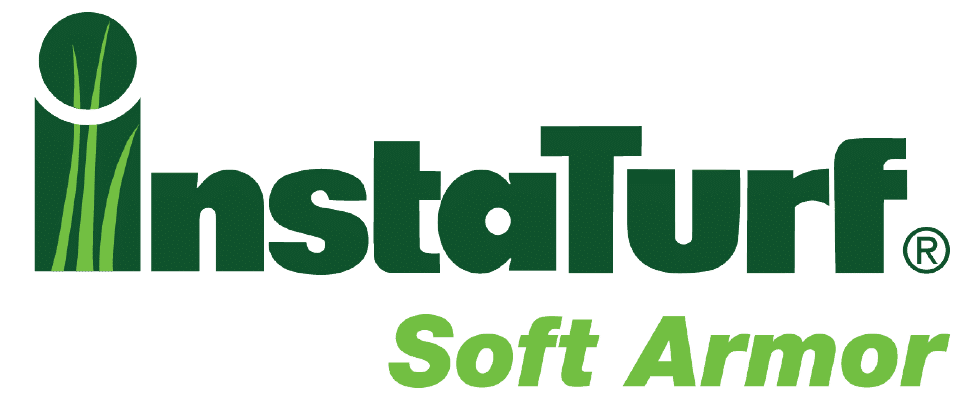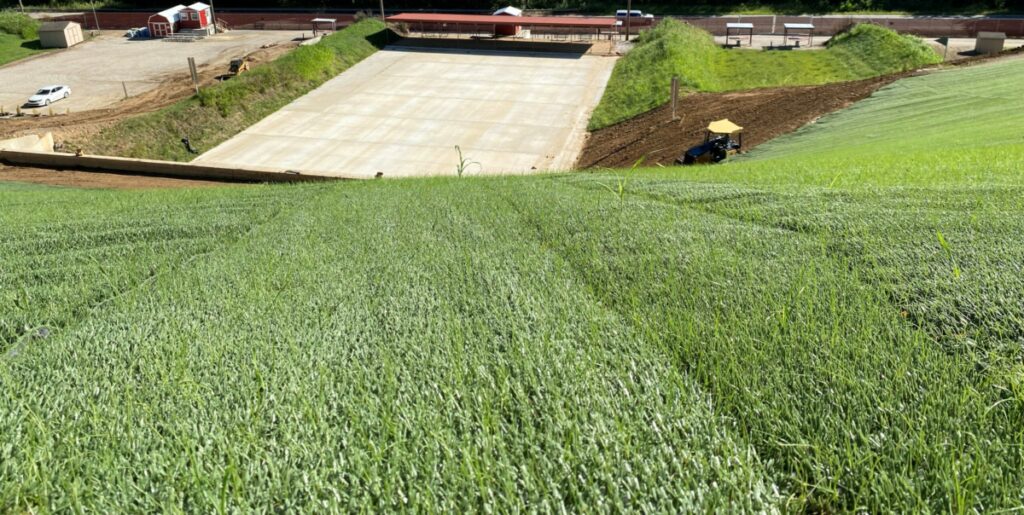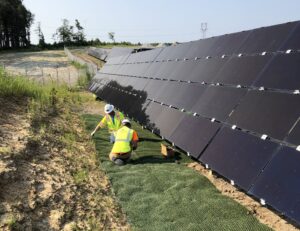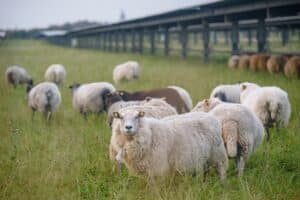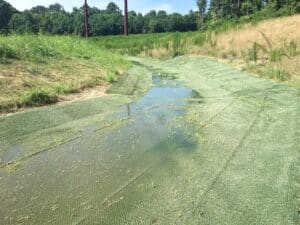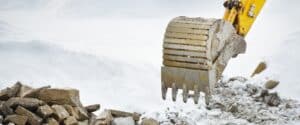InstaTurf is an innovative hybrid turf product designed to combat erosion and foster vegetative growth. It’s a revolutionary product that works by using and improving upon nature’s fundamental attributes. We’ve decided to put a short article together detailing how exactly InstaTurf works compared to other conventional erosion control measures, so you won’t be in the dark when it comes to deploying erosion control on your site.
Rock Riprap
Let’s start with the stone age. Rock riprap is a material commonly used for erosion control and represents relatively robust soil protection. Riprap is particularly adept at protecting hydraulic structures such as riverbanks, upstream and downstream slopes of embankment dams, dikes, breakwaters, and spillways, etc. If you’re a fisherman, you’ve likely cast your line near a rock riprap installation. Riprap is also often used for stabilization of drainage areas on construction sites. Due to its slowly-degrading nature, riprap is considered a permanent means of controlling erosion.
In general, there are two types of riprap installations: dumped installations consisting of randomly dumped stones; and placed rocks which are typically arranged in an interlocking pattern to better stand up to heavy abuse such as in the case of wave overtopping events. In stabilization of construction sites, dumped riprap appears to be a common means of installation. In any case, it is standard to install riprap over a geotextile fabric in order to prevent erosional undercutting. In fact, without a proper geotextile underlay to prevent the rock from disappearing into the subgrade and underlying soil from being sucked up through pore space between rocks, riprap will likely fail, sooner or later.
Fundamentally, riprap works in areas highly prone to erosion by securing and shielding the geotextile underlay while increasing surface roughness and slowing the velocity of runoff. Angular and large rocks are recommended in order to lock into place and sufficiently slow runoff and wave action. The greater hydraulic velocity expected, the larger average size your rock riprap needs to be. However, it is recommended that riprap be composed of various sizes of rock rather than uniform material so the rock can form a flexible, interlocking cover that will adapt to uneven surfaces.
Riprap can be seen as a material specialized only to prevent soil erosion. That is, it provides little or no design benefits when it comes to reducing runoff volumes or pollutant removal. What rock riprap does, it does pretty well when installed properly. But it falls short in terms of biodiversity and habitat development. As a matter of fact, should vegetation grow through rock riprap, it’s best practice to diligently remove it so as not to compromise the riprap installation.
Turf Reinforcement Mats
Turf reinforcement mats (TRMs) are under the larger umbrella of permanent rolled erosion control products. They represent a softer, more vegetation-friendly alternative to rock riprap and are predictably less protective prior to vegetation establishment during the first 6–12 months after installation. Some currently available TRMs include North American Green’s Vmax® SC250, C350 and P550, Western Excelsior® PP5 and PP5 Extreme, American Excelsior Recyclex® and TriNet™, and the Propex Pyramat® line of high performance TRMs (HPTRMs).
TRMs are permanent permeable mats that promote the growth of vegetation and increase its erosion resistance during and after establishment. They are traditionally employed on diverse applications such as steep slopes and drainage areas. They are composed of 3-dimensional structures designed to provide some level of immediate erosion protection and permanent reinforcement for the vegetation growing through.
TRMs are a particularly diverse group of products. They can be composed of synthetic fibers, netting, filaments, and/or wire mesh and might even include biodegradable fibers within the mat. Some TRMs are designed to be placed directly over seeded bare soil, and some are staked down prior to adding soil and seeds.
TRMs possess a relatively wide range of performance benefits. While they are useful for preventing soil erosion, the resulting vegetation helps remove pollutants in runoff water and prevent nutrient loading in nearby water bodies. Unlike hard armor solutions like rock riprap, the very porous, relatively lightweight nature of TRMs makes them vulnerable to erosion failures until vegetation becomes well established through their structures. As a result, TRMs are at a significantly increased risk of failure during the first 6–12+ after installation.
Tied Concrete Block Mats
If you’re looking to establish vegetation on your site but also want to employ a heavy, hard armor product to protect the soil, tied concrete block mats can be used to bridge the gap. Like TRMs, tied concrete block mats are generally rolled products made of extremely heavy concretel held together in some sort of netting, weave, or geogrid. Some common products in this space include Flexamat® by Motz Enterprises and Shoreflex® by Premier Concrete Products.
Tied concrete block mats are rolled products that require very heavy equipment to unroll and install. The benefit of tied concrete block mats is the ability to install hard armor that allows vegetation to grow through the product. Generally, tied concrete block mats are marketed as being easier to walk and drive on than hard armor solutions like rock riprap, though the concrete blocks themselves may prove troublesome for mowing equipment.
In short, tied concrete block mats are heavy products that require heavy equipment to install, but they protect like hard armor and allow some forms of vegetation to grow through the mat. Due to material and transportation, these products are also at a premium and the project’s budget should be considered closely before installing tied concrete block mats.
InstaTurf: ShearForce Hybrid-Turf Instant Armor Mats
InstaTurf ShearForce Instant Armor Mats are hybrid-turf products that emulate the benefits of natural grass while harnessing the power of real vegetation. InstaTurf products are designed for protecting severe slopes, channels, streambanks, and shorelines as well as culvert and pipe outfalls and other areas subject to turbulent water flow where traditional TRMs would likely fail.
Like TRMs, InstaTurf ShearForce Instant Armor Mats are permanent rolled erosion control products designed to foster and reinforce natural vegetation growth. They use a series of simulated turf blades along with a geotextile base to mimic the soil-protecting and sediment entrapment qualities of natural grass, even before natural grass establishes through the mats. Once vegetated, the ShearForce mats stay in place to significantly increase the erosion resistance of the natural vegetation and prevent washouts during dormant periods and/or under high velocity water flow.
Unlike TRMs, InstaTurf ShearForce products provide the same soil protection as 30-inch rock riprap from day one of installation. During the crucial 6–12 months before vegetation is established, InstaTurf holds its own against soil loss, with unvegetated permissible shear stress ratings 3 – 4 times those of conventional TRMs. The secret is the patent-pending combination of simulated turf blades and specially designed geotextile backing that filters soil particles but also allows seedling emergence. Like real grass, the simulated blades raise the hydraulic shear plane above the soil, while the geotextile fabric prevents soil loss through the turf structure. The result is a product that’s lightweight and easy to install like a TRM, yet immediately reliable like rock riprap.
InstaTurf products do more than prevent soil loss. The simulated turf blades entrap sediment in runoff, while the reinforced natural vegetation filters pollutants and facilitates water infiltration/groundwater recharge. InstaTurf not only protects as well as heavy riprap from day one, it only increases in effectiveness as natural vegetation grows through the product, either through seeding, planting, or natural processes. You can safely walk and mow over InstaTurf, from installation and into the foreseeable future. Eventually, it becomes difficult to even see where InstaTurf was installed due to vegetation growth, but its soil-protecting and vegetation reinforcing qualities remain strong.
Give this handy reference table a read below to compare common erosion control products and find the ideal solution to your site’s erosion problem.
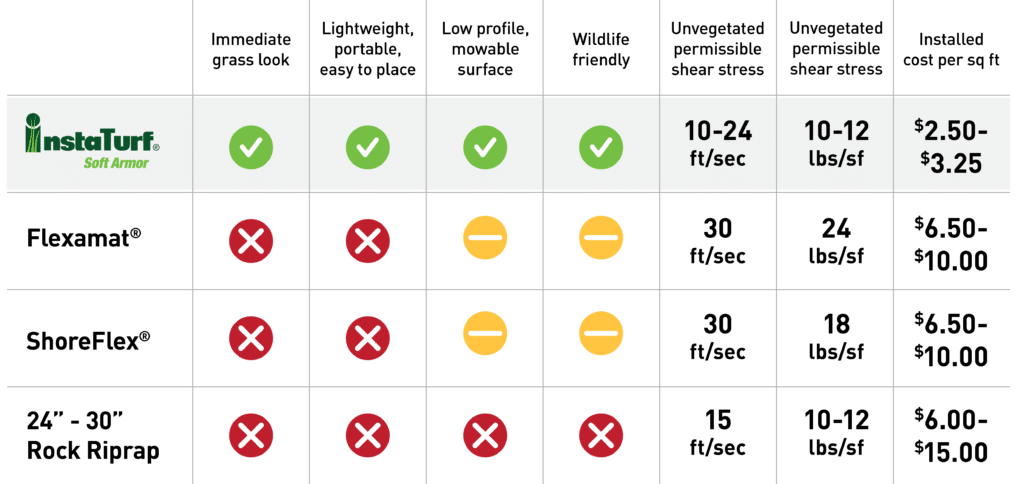
If you’re interested in more details about InstaTurf ShearForce products, visit our resources page for ASTM test results and in-depth installation guides.
